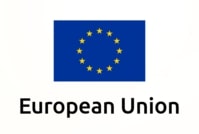In the seat of the prince of Normans - Caen
Caen is the capital of the Basse-Normandie region in the northern part of France. It is situated on the English Channel, on the Orne River. In the past, William the Conqueror himself made it his seat.
Caen was born on a limestone plateau, moreover, this limestone made the town famous due to its high quality. In the past, it was exported to work on the construction of the Tower and Westminster Abbey. The city also owes its development to the Norman prince, William the Conqueror, who built a castle here in the 11th century. Today, the building is a Caen landmark, distinguishing itself from numerous temples. It stands in the very center of the city.
Today, you can visit two museums located here: Musee des Beaux-Arts (Museum of Fine Arts) and Musee de Normandie (Museum of Normandy). Tourists can also walk around the castle grounds, see the remains of towers and walls, and admire the silhouettes of churches in the distance. From this perspective, you can see them exceptionally well.
Port away from the sea
Despite the fact that the city is known mainly as a port, it is quite far from the sea. It is also away from the beaches. To get to one, you have to go to smaller towns. Fortunately, they are easy to get to by bus (journeys from the center, journey takes approx. 45 minutes). The first beach is in Lionville-sur-Mer , with a rocky shore and small cliffs next to it. Tourists admire the sea only from the shore - because of the algae, swimming is not allowed here.
The second beach is on Hermanville-sur-Mer and is not much different from the nearest neighbors. Just a classic bathing beach, sand and a strip of promenade.
City of temples
As already mentioned above, there are an exceptionally large number of churches in Caen. There are also two large abbeys. At one time William appeased Leo IX, who opposed his marriage to the daughter of the Count of Flanders, Matilda. In order to buy the pope's favors, the prince founded two religious houses in Caen: one dedicated to St. Stefan (male) and the Holy Trinity (female). The first, the Abbey of Saint-Étienne , also known as Abbaye aux Hommes, intimidates visitors with its 80-meter towers and a gothic chancel with a huge Romanesque nave. It impresses tourists with its size, soaring structure and dignity of the interior.
The female religious house, Abbey of Sainte-Trinité (AbbayeauxDames), is smaller and less delicious, but it cannot be called modest. The façade of the temple complex is reinforced by sharp towers (apses), and in the interior everyone will feel small, weak and fragile.
Bird Hill
Caen is not just an old resort with a turbulent history. It is also a city full of greenery - you will find a lot of recreational areas, a beautiful botanical garden and an even more wonderful park called Colline des Oiseaux (Bird Hill). It is called the "flower park" and it fully deserves that term. In summer, you can feast your eyes on the variety of forms and colors of the flora, relax in a truly paradise setting or have a romantic date.
In the vicinity of the sea of flowers there is a place that also makes a great impression on visitors, but for a completely different reason. It is the Memorial de Caen , in which halls house exhibitions dedicated to the victims of the Second World War. In addition, it shows films about the latest problems in the world. The idea behind the museum is to promote peace.
Leaving Caen
Approx. 14 km north-east of the center of Caen is the year-round Camping des Capucines , where you can spend the night in your own motorhome. We will pay 2.2 euros for a parking space, and 6 euros for an adult.
The campsite is located in Ranville, a small town in the heart of the Calvados department. The distance from the beach is approx. 200 meters, moreover, it is a great starting point for further exploration of the attractions of Lower Normandy. And there is really a lot to see in the region.
A writer by profession, a passion of a cat. One day he will see what is behind the Urals - good to Vladivostok. So far, when he can, he enjoys the sun of the countries of southern Europe. And it's also fun;)
